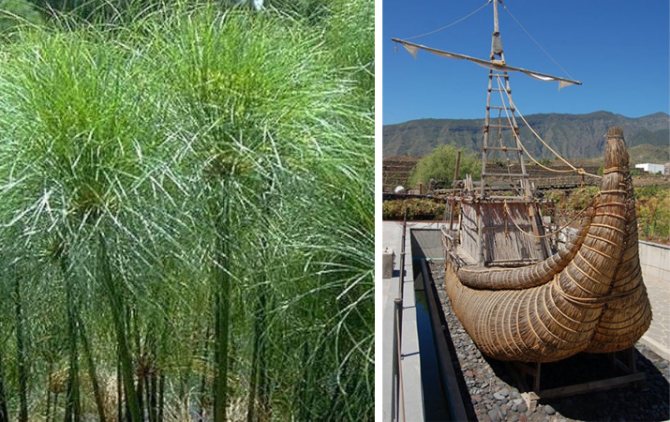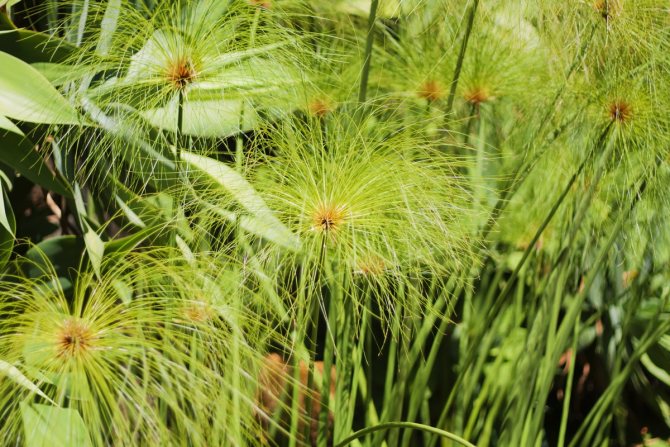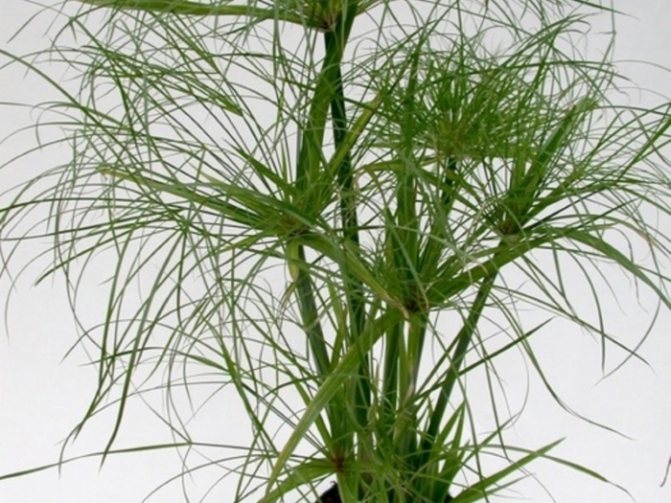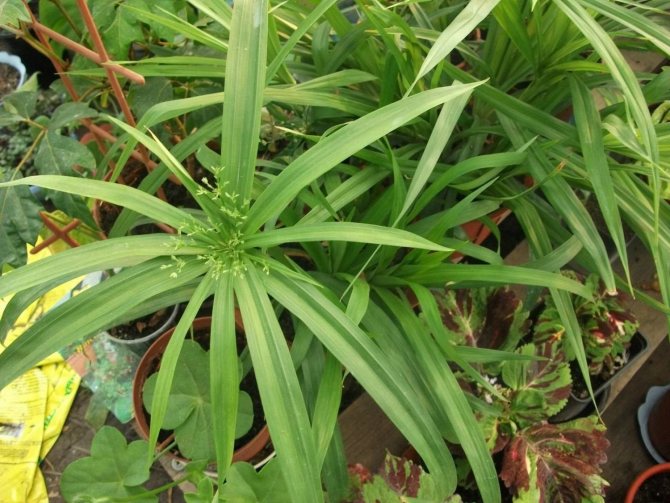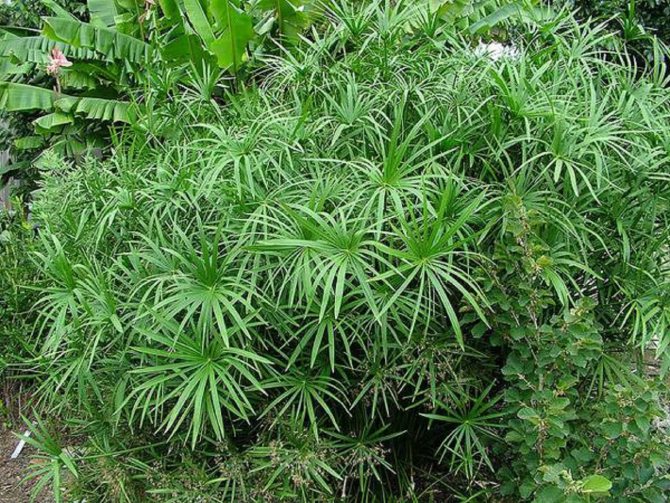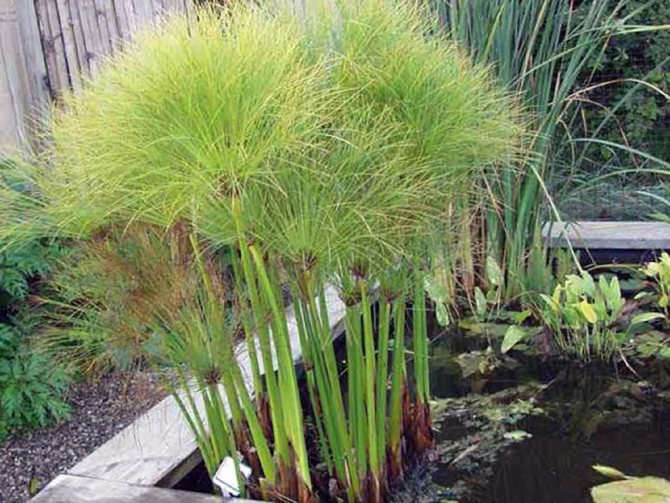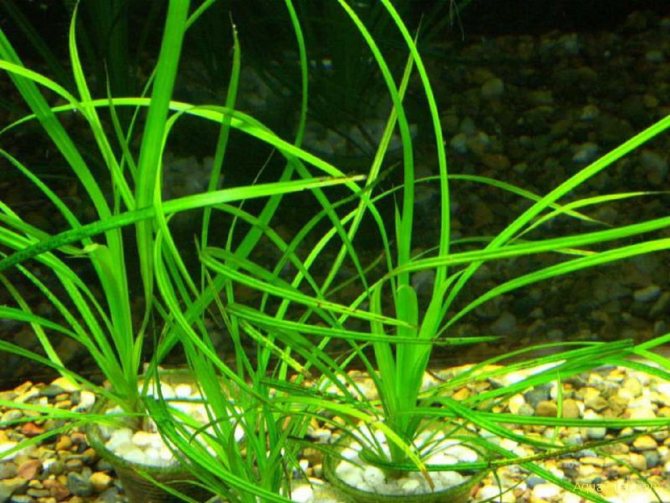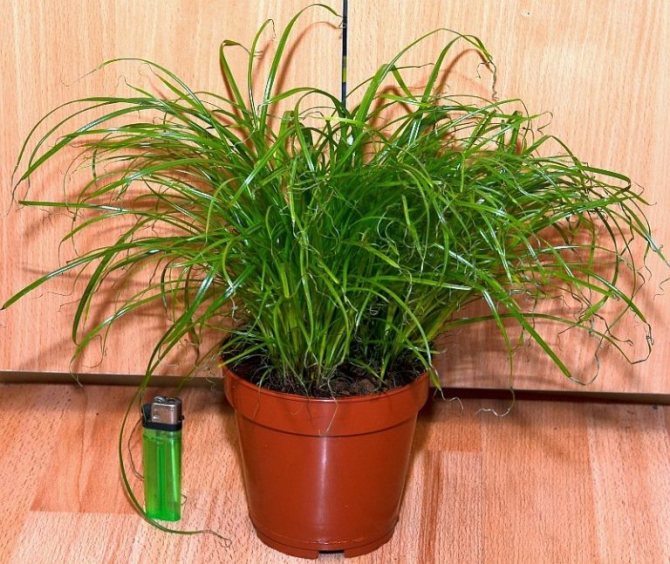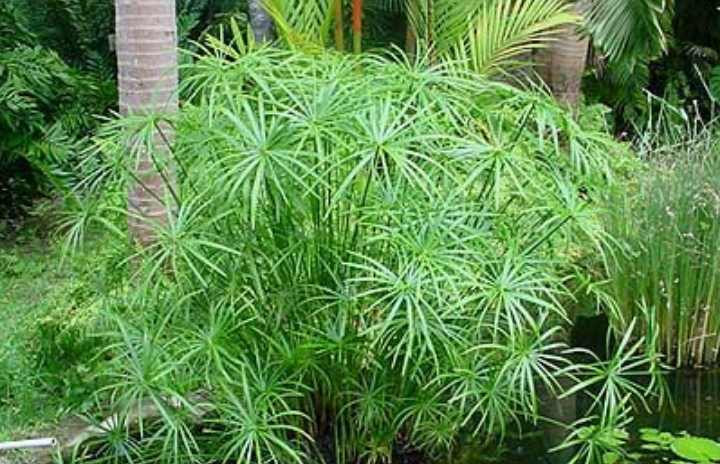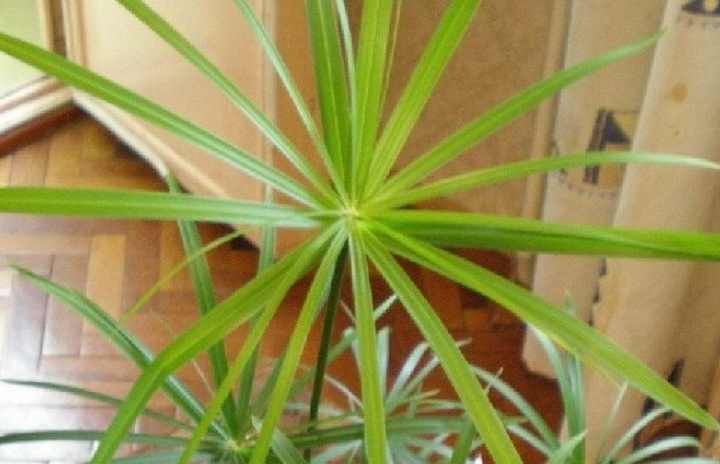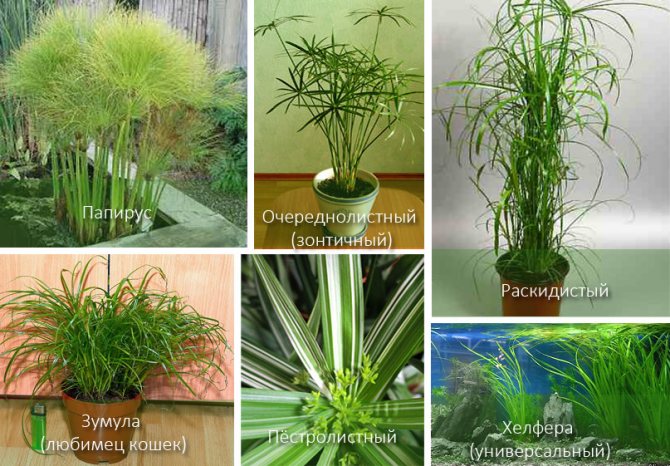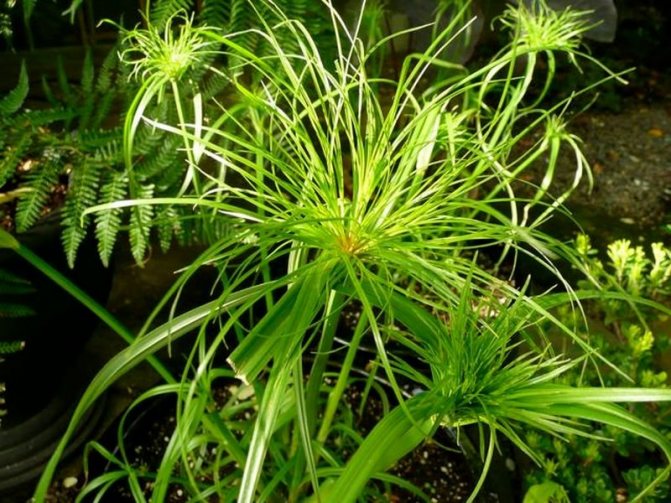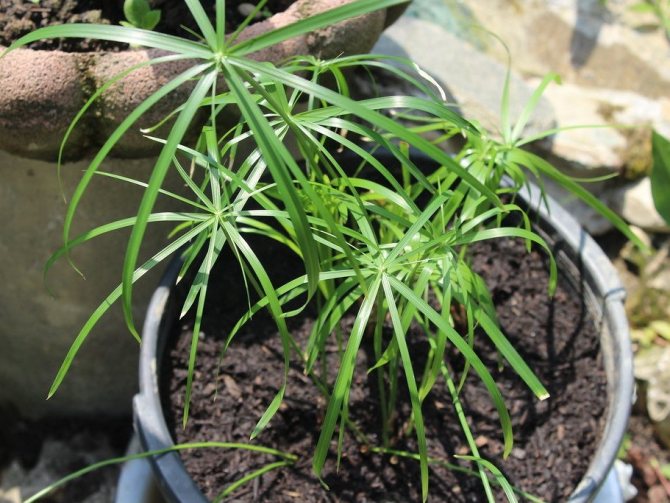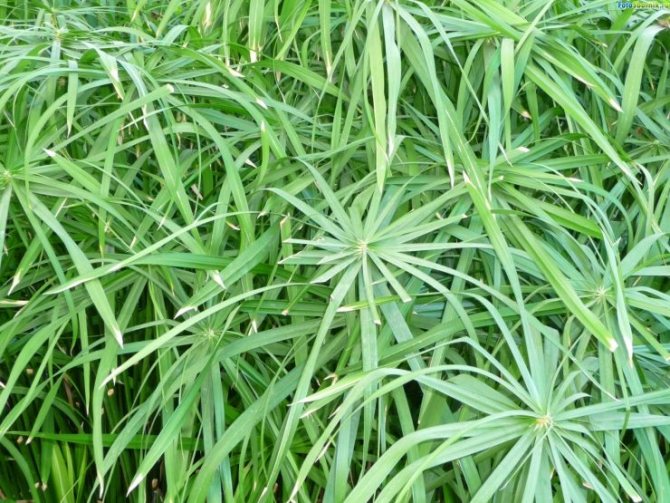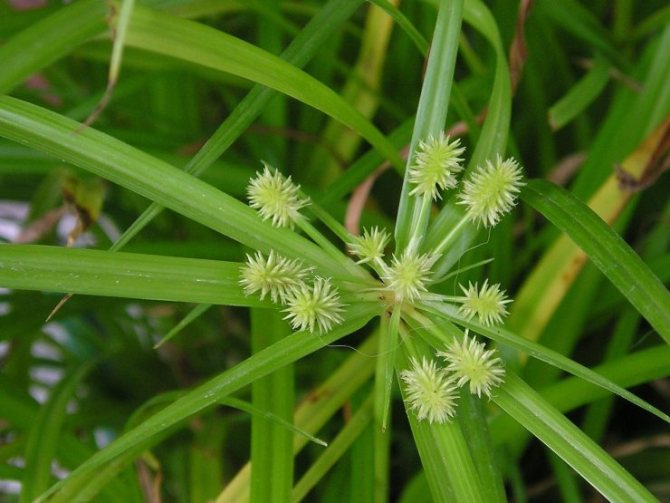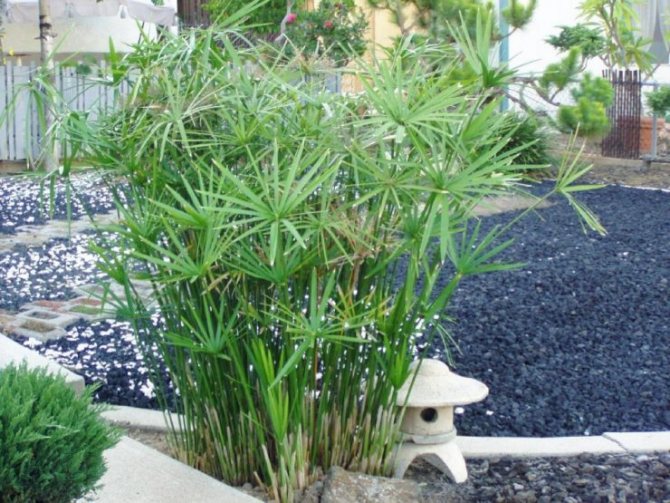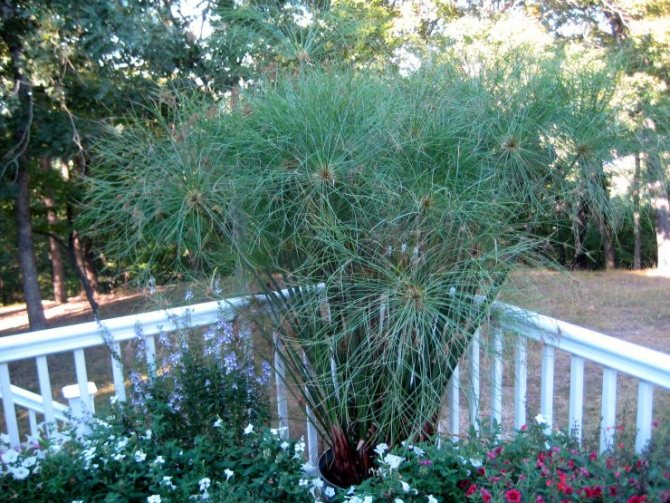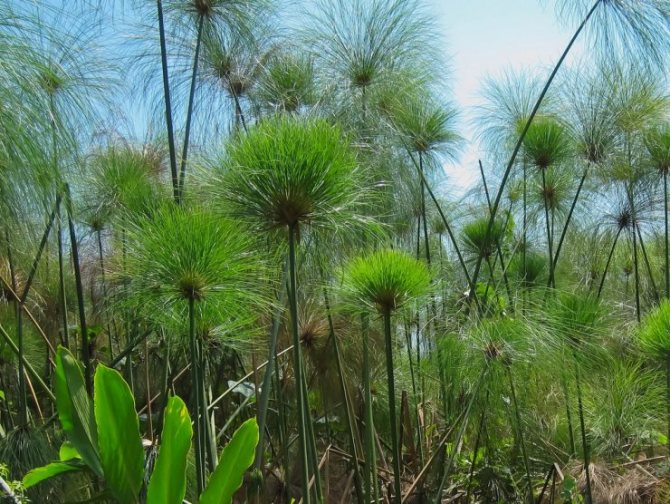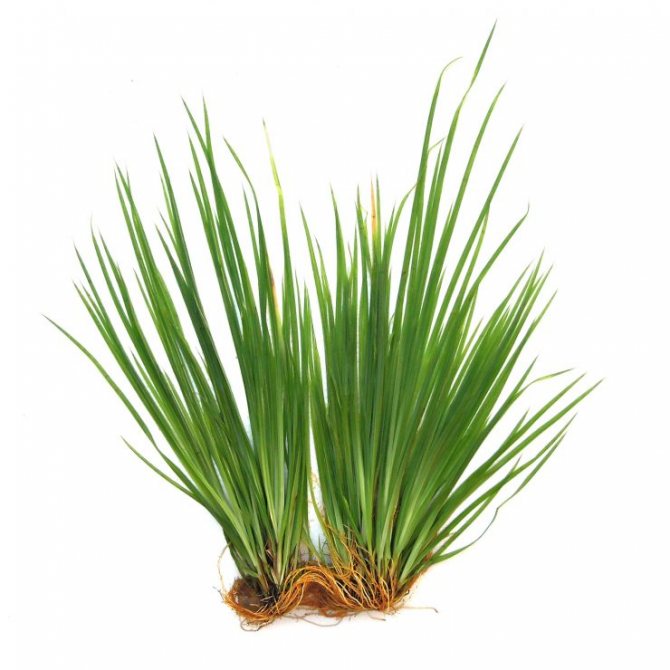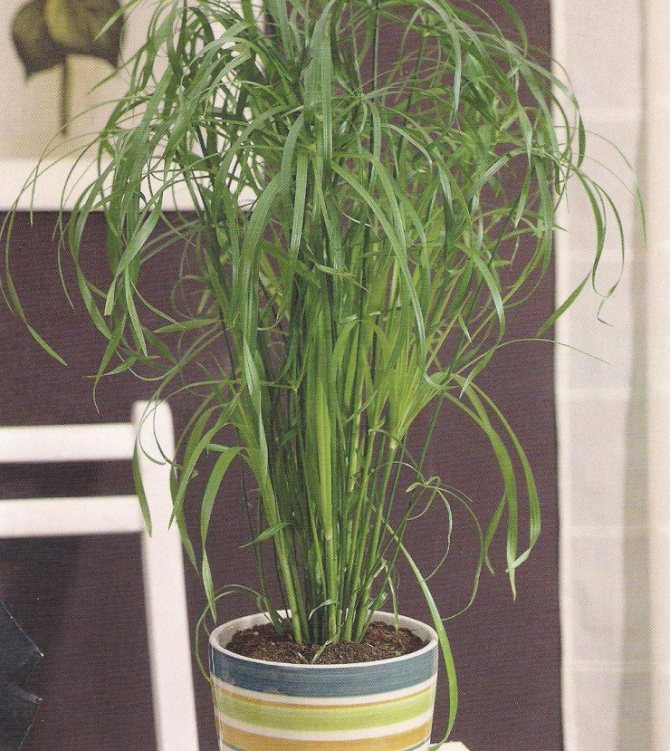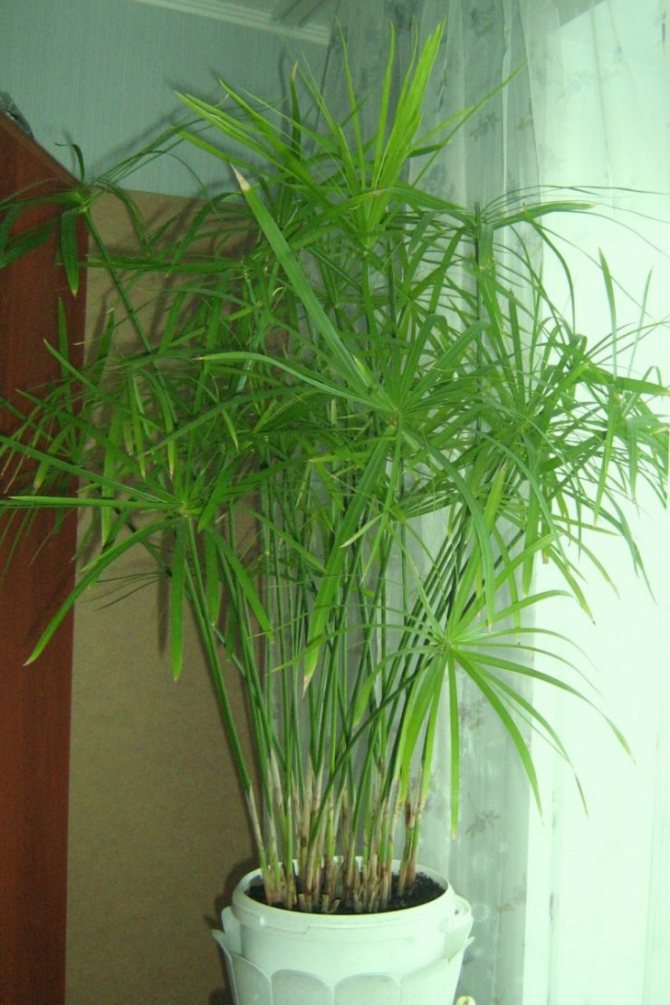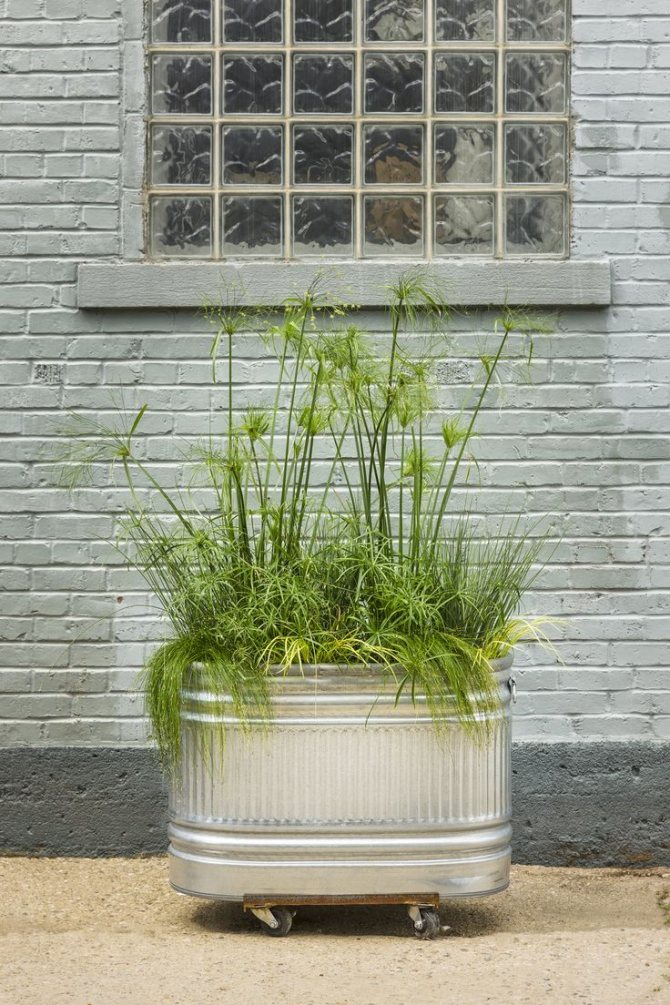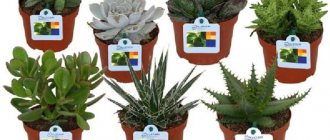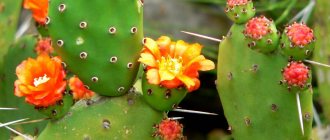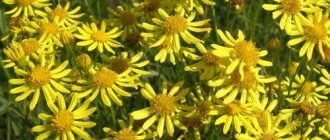Cyperus is a beautiful herb that grows rapidly and forms dense tufts of green vegetation. It will definitely appeal to lovers of decorative leafy indoor flowers and large green compositions. Caring for cyperus is very simple, so even a beginner can handle it. In its natural environment, the plant lives along the shores of fresh water bodies and is found in the tropics of every continent of our planet.
Here you will find out:
Description
Cyperus in nature occurs in swamps, along river banks, forming dense thickets... In a pot, representatives of this genus do not exceed a meter in height. The root system is represented by a superficially located branched network or a long creeping branch.
Cyperus grows in the form of a long erect stem with an "umbrella" of narrow leaves at the top. As with all herbaceous crops, they are characterized by rapid yellowing and dying off. After cutting off old branches, new shoots are formed. Their color is green, variegated varieties are rare.
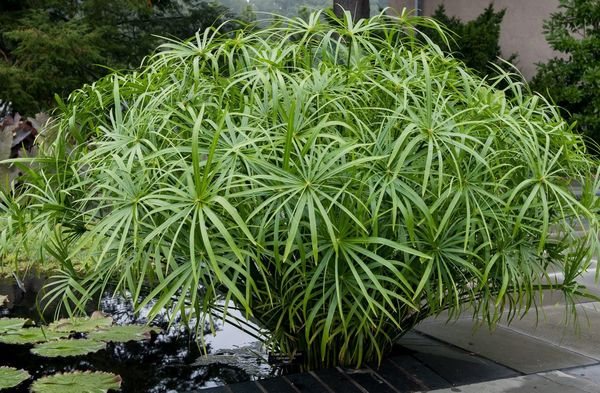
The flowering of papyrus is inconspicuous: yellowish-green triangular buds are formed on the peduncles, located singly or in the form of a rosette. The period falls in the middle of summer, and if the plant is in the fresh air, then it is pollinated by the wind. Then after flowering, brown bolls with small seeds appear.
Interesting! In another way, cyperus is also called sitovnik, venus grass, papyrus.
Views
In its natural environment, Cyperus is very diverse and has about 600 species. Only a few dozen of them have adapted to the home environment. The most beautiful and popular types are described below.
Elegant
It is considered a variety of the umbrella cyperus, intended for cultivation in the garden. The leaves of the graceful cyperus are stiffer and do not hang down at the edges of the umbrella.
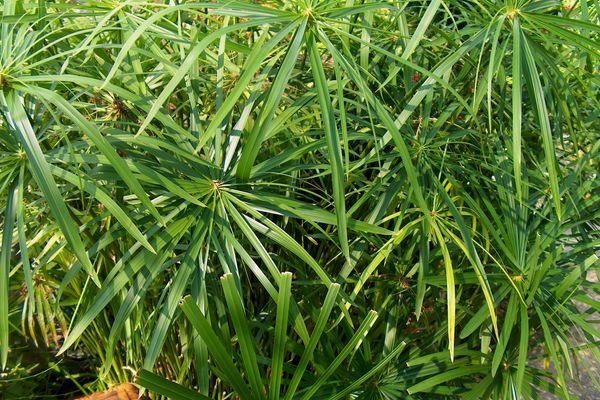

Variegata
One of the few variegated varieties of Cyperus with white longitudinal stripes.
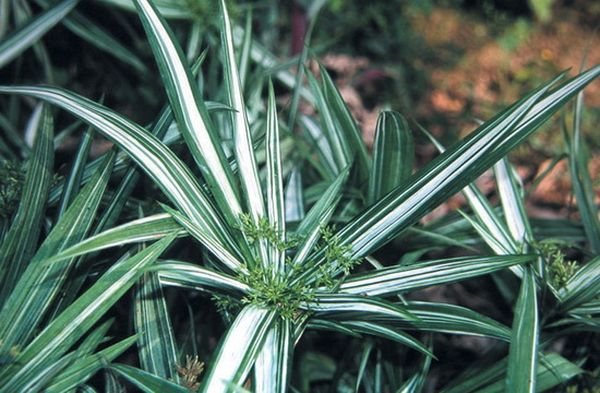

Papyrus
Originally from the swamps of Egypt and Ethiopia. Long leaves are located on a high stem. There are a lot of them, and in general the plant looks more like a bunch of green grass.
The buds appear in the axils of the leaves and gather in numerous inflorescences. The high height of the papyrus prevents the wide distribution of this species in apartments, it is more intended for keeping in greenhouses.
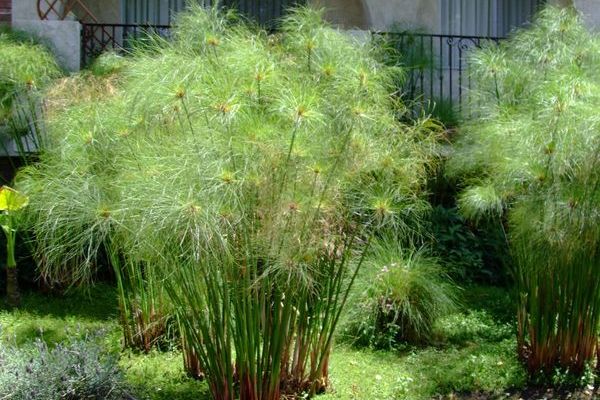

Spreading
The shortest representative of Cyperus. The height can be 40–90 cm. It also differs in the predominant root growth of leaves, which are wider than that of all other species. With the growth of a dense crown, it begins to release elongated stems with an umbrella of narrower leaves at the top. White flowers are very small, collected in panicles with long legs.
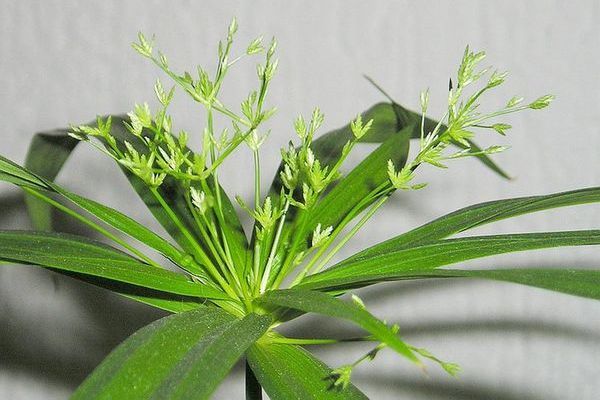

Alternate-leaved
A variety of umbellate cyperus has light green and long leaves on tall shoots.
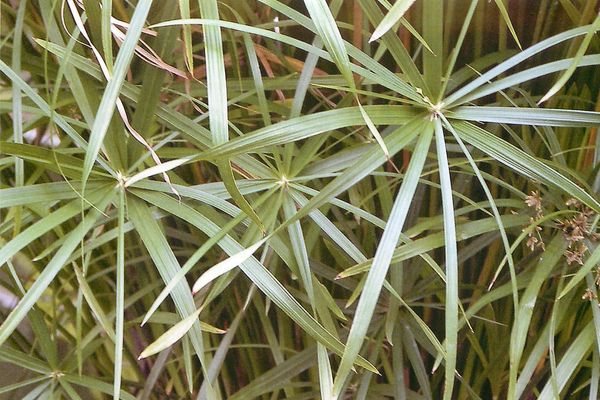

Zumula
It is intended for cultivation in the ground, from which narrow leaves up to half a meter long grow practically without a stem.
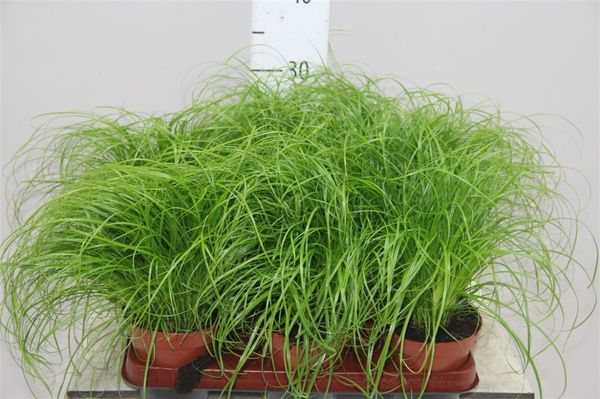

Caution! Pets often mistake cyperus for grass and begin to eat the tips. This can cause poisoning.
Helfer
Cyperus of this species is more common in aquariums. It has a short stem up to half a meter and a rosette of long leaves.
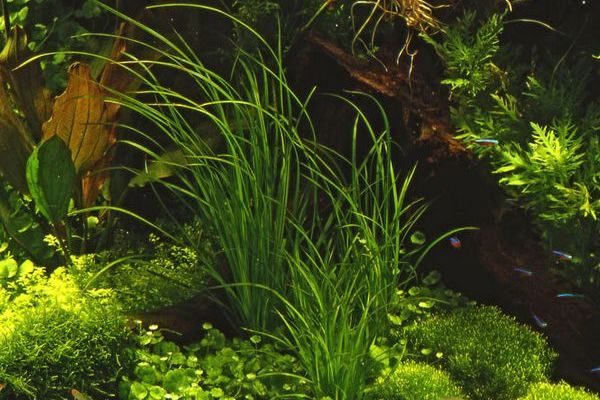

Pharaoh
A tall species will need frequent pruning.Differs in an unusual color of the stems: at the top they acquire a bluish tint. In summer it produces yellow-green flowers.
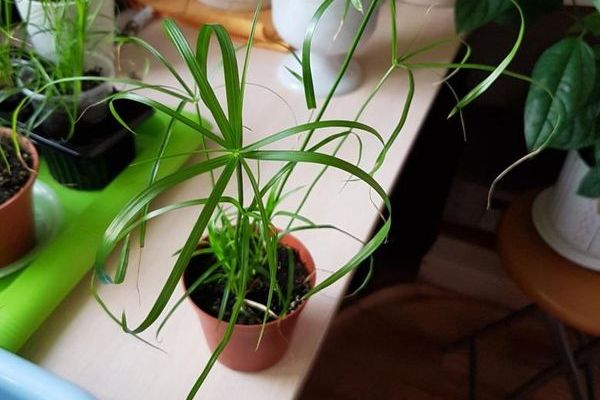

Gaspan
The erect stems are very tall and are intended for a garden or greenhouse.
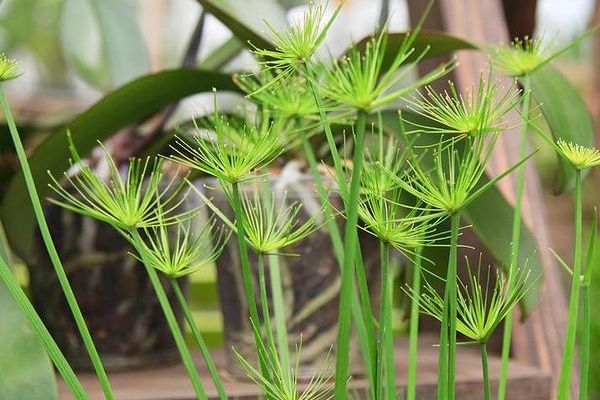

Umbrella
Indoor tsiperus is most often associated with the umbrella view. It has an erect stem with 3 edges, and at the top, the leaves are collected in the shape of an umbrella. The tips of the leaf plates hang down a little, and their length can reach 30 cm. It often blooms with medium-sized panicles and forms seeds for further reproduction.
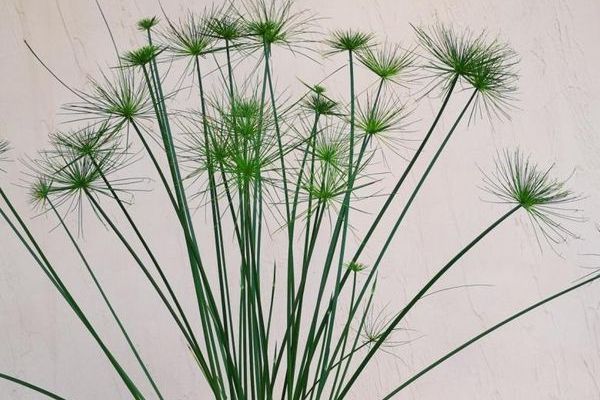

The benefits of cyperus
Since ancient times, cyperus has been of great practical importance. Its sturdy stems were used to weave baskets, garments, and ancient paper - papyrus. The fleshy roots of some species of cyperus were eaten, for which it even received the name "earthen almond".
Some growers think: "Is it possible to buy a cyperus flower into the house, because there are many superstitions associated with it?" Fans of esotericism give an affirmative answer. Cyperus is only beneficial. It expels negative energy, protects the house and stimulates household members' craving for new knowledge. Tsiperus in the house fights the depression of his master, protects him from deception and betrayal.
In addition to influencing subtle energies, cyperus improves physical well-being. The plant releases nutrients that purify the air and destroy harmful bacteria. The best place for him is the bedroom, where he promotes relaxation and sound sleep.
Post Views: 1
Growing
Home care for cyperus is simple, it is considered an unpretentious plant.
Illumination
Cyperus is one of the few indoor flowers that only benefits from standing away from the windowsill. Of course, it won't grow in the dark, but in a corner with diffused daylight will remain lush and green.
Advice! If the house has an open aquarium, then it is recommended to put the pot on the shelf. This will create almost natural conditions in which cyperus grows along the banks of reservoirs.
In winter, it is recommended to take additional care of the indoor flower and illuminate its leaves with a phytolamp... This will protect them from yellowing and rapid fading.
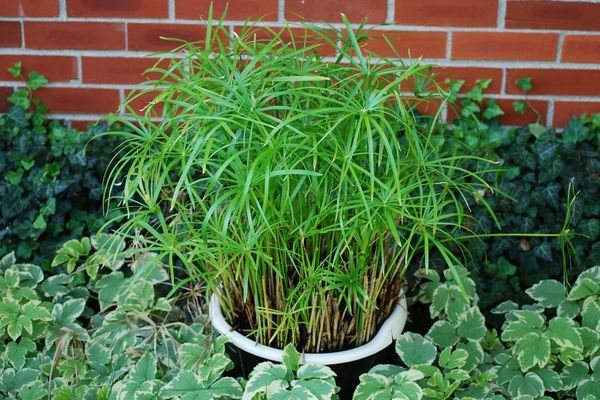

Temperature
Unlike many plants, Cyperus is not afraid of cool air currents. Therefore, the room in which the flower grows can be ventilated without fear as often as possible.
Comfortable temperature for papyrus in summer is in the range of 20 ... 25 ° С... At higher rates, it is useful to spray the leaves more often and ventilate the room. The opportunity to take cyperus out into the street should be safely used.
Important! Cyperus does not tolerate heat and stagnant air; with prolonged storage in such conditions, it quickly loses its attractiveness.
In winter, you should not test the flower for strength and reduce the temperature to 14 ° C. This is especially true for plants standing on a windowsill near window panes. When airing the pot, it is better to remove it to the back of the room.otherwise the leaves will get frostbite.
View this post on Instagram
Posted by Jirk (@ zent_irit1982) 27 Sep 2020 at 6:02 am PDT
Watering
Cyperus is practically the only indoor flower that can grow in water-filled soil. The substrate is watered every day in large quantities.to keep it constantly wet.
Important! With this approach, the roots can rot only if the temperature of the soil and air is below 20 ° C.
It is also not necessary to drain the moisture from the pallet after watering. It is best to place the pot in a high container and fill it halfway with water. The liquid must be regularly changed to fresh.
In winter, watering is slightly reduced: water is drained from the pallet, the frequency of humidification is reduced. The earth should not float now, but it should not be allowed to dry out either.
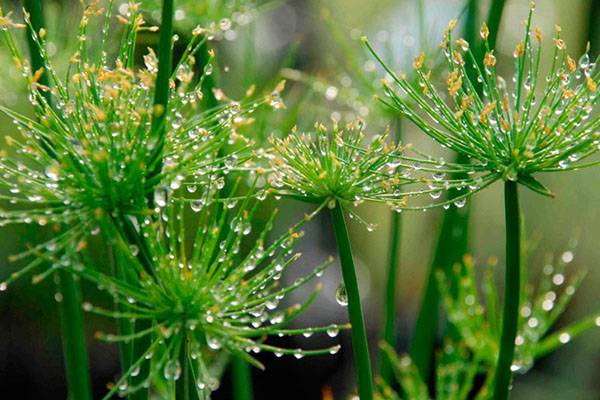

Cyperus is sensitive to water quality.It will not accept hard and dirty moisture, so tap water settles and softens 3 days before watering. Better yet, collect rainwater or melt snow.
Air humidity
Normal air humidity for cyperus - 75%... For such indicators, you need to spray the flower daily or install a humidifier nearby. Since the leaves collect dust, it is best to rinse it off with a weekly shower. Artificial waterfalls or an aquarium also help maintain high humidity and are placed next to the pot.
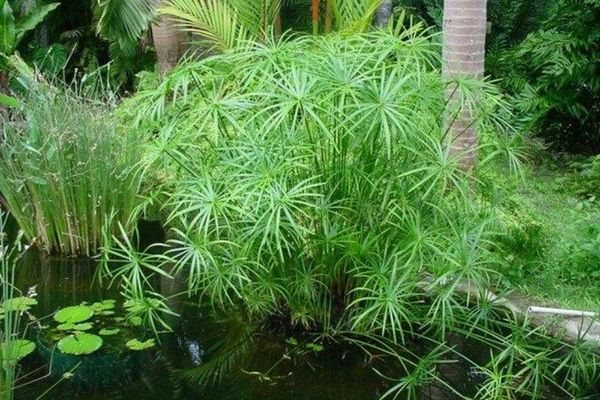

Fertilizer
For most of the year, with the exception of the cool winter, it is recommended to fertilize cyperus twice a month. Fit complex fertilizing for deciduous indoor plants in liquid form.
In spring, nitrogen fertilizers are added to stimulate the growth of green foliage.
Advice! For young plants, the concentration of the solution is made half as much as indicated on the package. Only wet soil can be watered with fertilizer, otherwise the roots will receive a chemical burn.
Pruning
Tall cyperuses in spring or autumn have to be cut by 2/3 shoots... Yellowed branches are also cut off throughout the year.
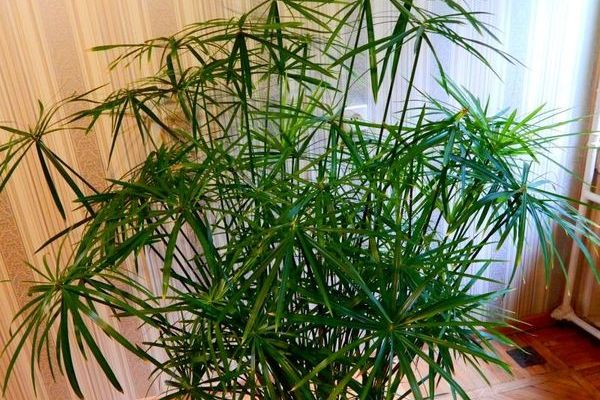

Transfer
Cyperus is calm about the transplant and tolerates it easily. It is recommended to increase the pot and change the substrate to the pet every year, then the risk of diseases and loss of decorativeness will decrease:
- The plant is removed from the pot, its root system is examined.
- Any unhealthy roots are cut off, and the site of damage is sprinkled with charcoal.
- Place the flower in a new pot and carefully cover with the substrate.
For long roots, the pot is selected deep and roomy. Varieties with superficially branched rhizome will grow better in a wide container... The plant needs enough space not only to house its roots, but also to grow further.
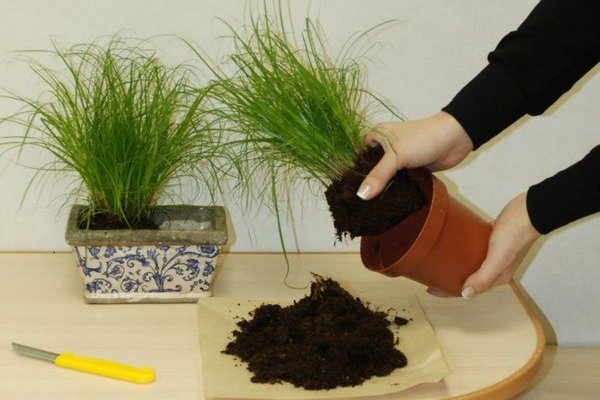

The soil is made from equal parts of sod land, humus, peat and sand. For an ideal composition, add a part of the dried grass and river (marsh) silt... In this mixture, water forms bubbles surrounding the roots.
Diseases
The growth of small leaves and pallor of color are observed in low light conditions. It should be borne in mind that daylight hours for cyperus lasts at least 12 hours.
From the high rates of the thermometer, the herbaceous plant quickly withers and dries. Do not be afraid of constantly open windows or vents during the hot season. In winter, you need to set aside the pot from heating appliances.
Almost at the same time, all the leaves dry up and fall off from dry soil. From a tight pot or lack of nutrients, cyperus stops growing. Sunburns on foliage appear as gray spots.
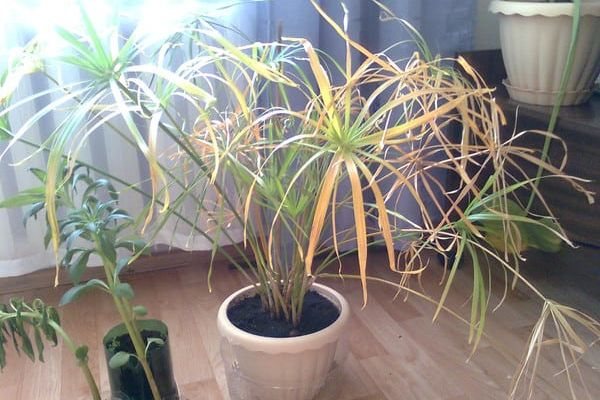

Content
- Listen to the article
- Description
- Cyperus home care How to care
- Fertilizing cyperus
- Cyperus transplant
- Propagation of cyperus by seeds
- Insect pests
- Cyperus alternifolius (Cyperus alternifolius)
Reproduction
Cyperus reproduces by cuttings, dividing a bush or seeds.
Seeds
Spray the seeds with a solution of potassium permanganate, fill a container with a lid with peat and sand (1: 1), water. Spread the dried seeds on the surface of the substrate, close the lid and leave at a temperature of 22 ... 25 ° С.
There must be enough light in the greenhouse, the soil is ventilated and moistened as necessary. Sprouts with 5 leaves are planted in separate pots.
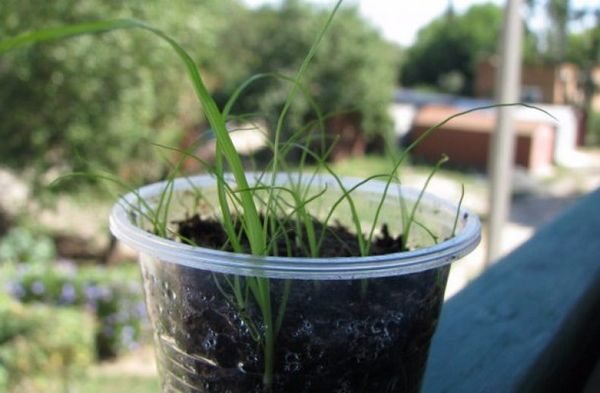

Outlets
In adult plants another rosette of leaves forms at the top of the shoots... For reproduction, it is pinched off together with the stem and upside down is immersed in water (sand).The rosette can not be cut off, but tilted straight to the ground along with the shoot, secured and sprinkled a little with soil at the base, then wait for the young cyperus to start growing.
Cuttings
The stalk is cut from the top of the branch. The leaves are shortened by more than half. The peculiarity of rooting is that the stalk sinks into the water with the leaves down. Warm roots form in about a month.
Dividing the bush
The method is suitable for an overgrown plant: its the rhizome is cut into pieces during transplantation... Each new bush should have at least 3 shoots left. The divided cyperus is immediately planted in separate pots with ordinary soil.
Home care
IMPORTANT! The main requirement for him is constantly wet soil... In the summer, it is optimal to place the pot in a container with water, and in the winter, water it often.
This plant can be used to create a tropical corner at home, as it is very decorative, its stems can reach half a meter in length. It is a wonderful neighbor for other moisture-loving plants such as orchids.
The grass grows in very moist soil, while evaporating itself a large amount of moisture, which can be very beneficial for other plants.
The video shows how to care for cyperus:
Lighting
Prefers well-lit places, but can adapt to growing in the shade. Backlighting is still recommended in the dark.
Temperature
The plant is best kept at a temperature of 18-25o C. It is better not to lower the temperature below ten degrees.
Air humidity
As already noted, Cyperus is very moisture-loving. For the best leaf formation, it is recommended to spray it with water at room temperature as often as possible. And the pot must be kept in a container filled with water.
Watering
There is never too much watering for this plant. It is advisable to water as often as possible, with pre-settled water at room temperature, make sure that the soil has always been moistened.
IMPORTANT! And do not forget about the container with water in which the pot should stand.
Top dressing
This plant does not have a dormant period. It grows all year round. Therefore, it must be constantly fed with the most common complex fertilizer. In spring and summer - every two weeks, and in autumn and winter - once a month.
The soil
Clay with turf, peat, humus and sand in equal proportions. The soil should be slightly acidic. Fine charcoal can be added to retain moisture.
Transfer
This procedure is carried out in the spring. Transplanted into a slightly larger, but definitely a tall pot... It is possible without drainage.
How to trim?
Timely and correct pruning of the plant favors its growth and is an excellent prevention against diseases. To do this, you first need to cut off the old yellowish leaves.
Variegated species quickly lose their correct color, so all green shoots must be cut off from them. If strange brown flowers growing in stripes began to appear in the sinuses, it is worth removing them too.
Possible problems
Problems with the appearance of cyperus arise with systematic violations of the rules of care.
Cyperus turns yellow
Possible reasons:
- insufficient watering and air humidity;
- lack of minerals in the soil.
With a long content in one flowerpot without replanting, the soil is also depleted, the plant withers.
The tips of the leaves dry
Dry leaf tips cyperus reacts to low air humidity or high temperatures... Frequent spraying and rinsing of the marsh plant in the shower should not be neglected.




